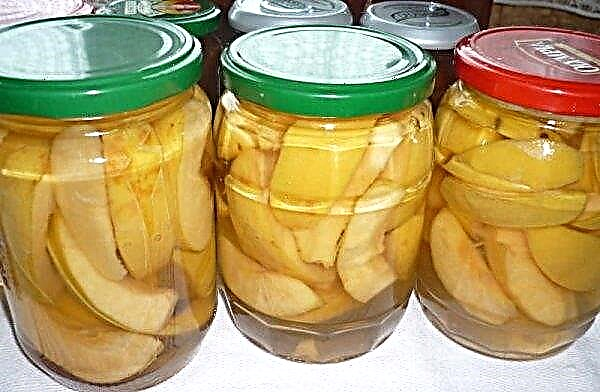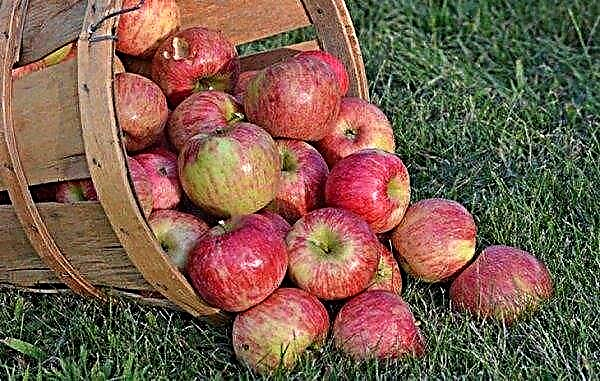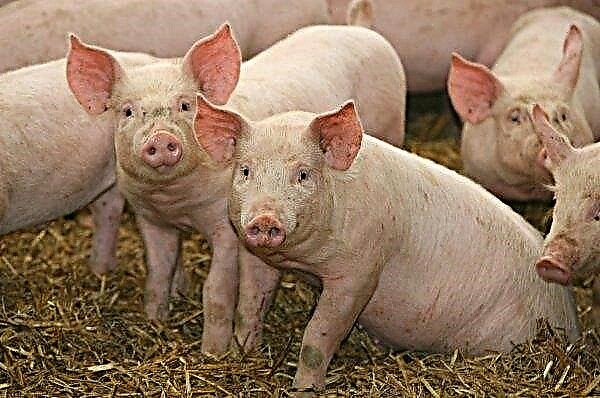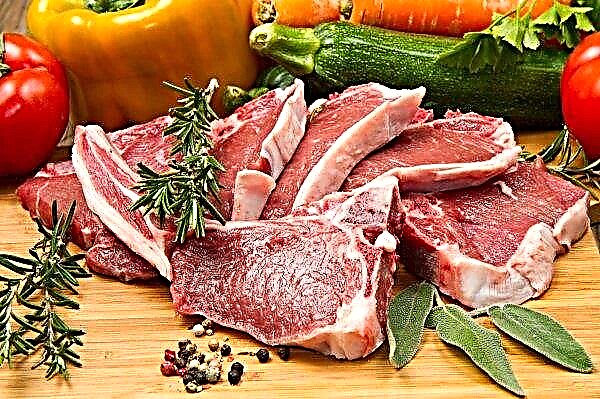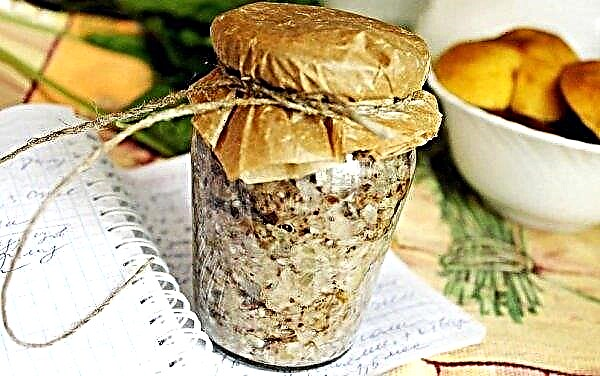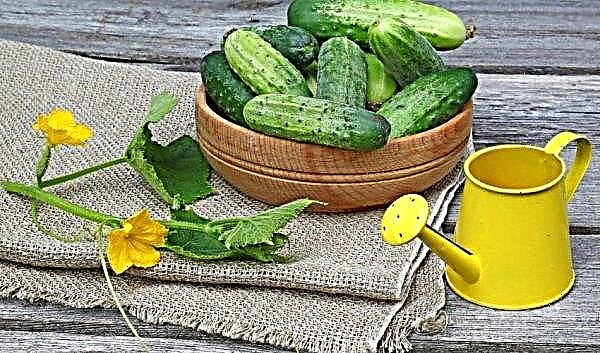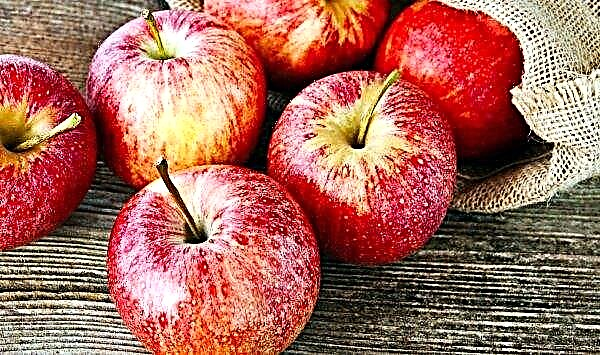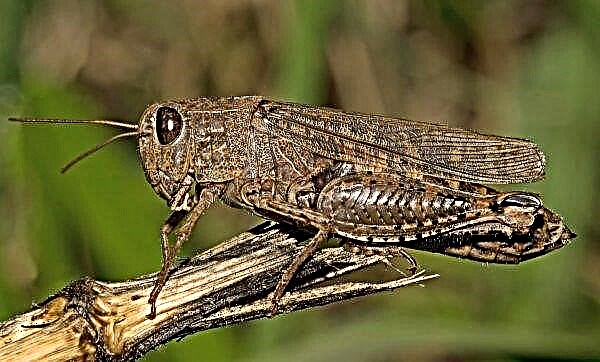The elegance, attractiveness and spectacularity of the hydrangea of tree-like Bell Anna will not leave indifferent any grower and florist. Caring for this breeding variety will not be a source of trouble, because the culture is quite unpretentious. Read more about the features of growing hydrangea Bella Anna read on.
Grade description
This flower is a novelty in the floral market, which is rapidly gaining popularity due to its high decorative qualities. The year of birth of this hydrangea is 2012.
In the description of the varietal variety, the following characteristics should be noted:
- bush: differs in spreadability, the average height is 1.5 m, and the diameter can reach 2 m;
- shoots: grow straight up, distinguished by elegance and lack of strength, can lie under the weight of large inflorescences. The color of young shoots, which grow in spring, is greenish, with the lignification they acquire brown shades. Such a feature assigned a tree-like name to hydrangea;
- foliage: opposite, painted in light green tones. It has an ovoid shape with serrated edges and pointed peaks. The base of the leaves is round. In autumn, foliage is repainted in yellow tones;
- inflorescences: the diameter of one graceful bud is about 15–25 cm. The color of the five-lobed flowers gradually changes - at the beginning of flowering they are dark pink, almost raspberry, and closer to autumn they acquire light shades of pink. The average diameter of one flower is 1.5 cm, the shape is regular (actinomorphic). Hydrangea blooms in late June and pleases the eye with its elegant spherical chameleon inflorescences until early September.
Advantages and disadvantages
- Among the advantages of the flower Bella Anna:
- high decorativeness, which is explained not only by the spectacular effect of large inflorescences, but also by the ability to modify the purple color in different shades during flowering. This property did not go unnoticed by landscape designers, since it helps them create elegant and memorable floral arrangements;
- unpretentiousness and undemanding;
- good winter hardiness;
- immunity to attacks of diseases and pests;
- long flowering period.
The tree hydrangea Bella Anna can only distinguish one minus - the insufficient strength of the shoots, and therefore they are not able to withstand the weight of large inflorescences. It is also worth remembering that hydrangea is a moisture-loving plant, but at the same time it does not tolerate prolonged stagnation of water.
Did you know? Buddhists endow hydrangea with magical powers. Tea from it is a ritual drink: on the day of the holy holiday, Buddha’s birthday, everyone who comes to his temple must pour pouring hydrangea leaves on his statue’s head.
Landscape design application
The spectacular decorativeness of hydrangea Bella Anna allows you to create unrivaled floral arrangements with her participation. Even in single stands, the variety will look amazing. It is widely used in groups of woody-shrubby and perennial flowers. Due to the ability to change the color of inflorescences, the plant is ideal for creating floral arrangements with a contrasting play of color. It is used both to decorate private garden plots, and to ennoble park areas and recreation areas.

Landing
The planting procedure for Bella Anna variety, like any other type of flower, consists of the correct choice of place, preparation of soil on the site, compliance with the time range. Read more about each item below.
Did you know? The word hydrangea comes from the Greek roots of Hydor and Angos - “water” and “vessel”. This name is due to the fact that the plant is very fond of water.
Site selection and soil preparation
The decorative bush directly depends on the correct choice of seat. So, hydrangea Bella Anna prefers penumbra, although it is distinguished by photophilousness. The fact is that direct sunlight is fraught with a growth retardation and a decrease in the size of inflorescences. For this reason, a spot with diffused sunlight should be preferred. An ideal seat is near fences or walls. Here, hydrangeas will be provided and shading on hot days, and protection from winds with drafts, which the plant is afraid of.

The soil should be moist but well-drained. Marshy and lowland areas that can be flooded, hydrangea does not welcome. An important requirement - the soil must be acidic. Before planting, the soil needs to be dug well and loosened, cleaned of the remains of vegetation.
Important! It is impossible to plant the described varietal variety under trees or close to large plants: the overall rhizome of neighboring crops will lead to depletion of hydrangea, since it will remain without the required amount of water.
Landing time
Bella Anna can be planted in spring and autumn. However, in cold climates with severe winters, preference should be given to spring planting, since the plant needs time for acclimatization and good rooting, without which it simply can not survive the first winter after planting.
Step-by-step instruction
The planting procedure for tree hydrangea Bella Anna consists of the following stages:
- Digging holes. The optimal parameters are 30 × 30 × 30 cm, and the distance is 2–2.5 m.
- Carrying out a drainage system. For this purpose, a layer of fine gravel, gravel or broken brick is laid at the bottom of the pit.
- Preparation of the substrate. The composition of the nutrient mixture should include turf land, peat, sand and humus in the recommended proportions - 2: 1: 1: 2.
- Fertilizer. For this, urea (20 g), potassium (20 g) and superphosphate (60 g) are added to the substrate.
- Putting a seedling in a hole. At the same time, it is worthwhile to ensure that the root neck is above the soil layer.
- Falling asleep pit nutrient mixture. The soil must be compacted.
- Watering and mulching. After planting, the plant requires abundant watering - about 1 bucket of water per seedling. As a mulch for a near-trunk circle, it is worth choosing peat or humus.
 If planting is carried out in the spring, then annual shoots need to be cut to 3-4 buds.
If planting is carried out in the spring, then annual shoots need to be cut to 3-4 buds.
Care
Care for the hydrangea in question consists in timely hydration, top dressing and crop pruning, as well as in preparing it for winter.
Watering and feeding
The indicated varietal variety is very fond of water, so it should be watered regularly. Watering frequency - 2 times a week. In dry times, the culture is watered every day, using 1 bucket of water for one bush. At the same time, it is worth monitoring the quality of the liquid: it should be soft. You can not water Bella Anna with plain running water. She needs well-defended rainwater, slightly warmed up. To make the liquid softer, you can add 4-5 tablespoons of vinegar or lemon juice to it.
Important! The first two years of life after the planting procedure, hydrangea will not need fertilizers, since it has enough nutrients introduced into the substrate.
Bella Anna needs to be fertilized twice a year: in early spring and autumn. You can use complex preparations for hydrangeas - this, for example, "Biopon", "Livestock", "Pokon". Feeding can also be prepared with your own hands - by mixing superphosphate, potassium sulfate and ammonium nitrate in the same proportions.

Trimming and Shaping
Trimming hydrangea Bell Anna in order to form and rejuvenate the bush should be in the spring, after the snow has melted. All shoots are shortened to the level of 2-3 kidney pairs. If the bushes are strong and powerful, then you can leave only one pair. Young shoots with inflorescences will grow from each bud.
If you find thin and weak twigs on the bush, then you need to trim them under the root. It is also necessary to do with shoots growing inside the bush in order to give the plant the correct shape. Neglecting pruning will lead to thickening of the shrub, and it will not bloom qualitatively.
 In autumn, it is recommended to shorten young shoots to 4 renal pairs.
In autumn, it is recommended to shorten young shoots to 4 renal pairs.
Shelter for the winter
In order for hydrangea Bella Anna not to suffer from severe frosts in winter, she needs to be covered with a spruce branches.
Breeding methods
Bella Anna is propagated by vegetative methods:
- Cuttings. As cuttings, you need to take one-year shoots, whose length is about 12 cm. They must be cut at an angle of 90 °, remove the lower leaves and place for 2-3 hours in a solution of “Kornevin” or “Heteroauxin”, which stimulate root growth. Then the cuttings are placed in a nutrient substrate on the distributing bed of a greenhouse or greenhouse, where they will take root. Transplanting sprouts is possible only after a year.

- Bush division. Perform the procedure in spring or autumn. The bush is dug up and divided into several parts. It is important that each seedling obtained in this way has a renewal bud. Plants are planted immediately in pre-prepared wells.
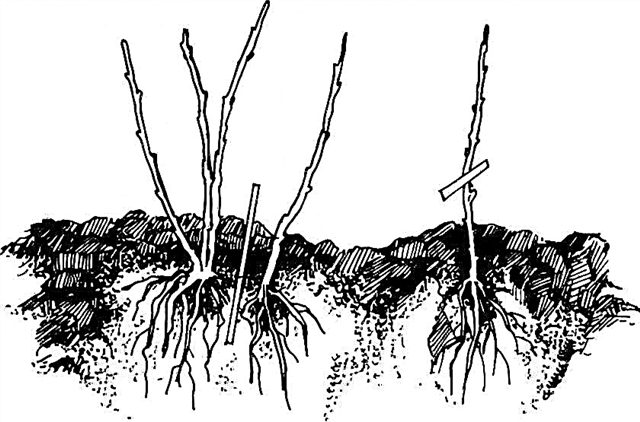
- Layering. You need to choose an escape whose age is more than one year, tilt it to the ground. Sprinkle the shoot with soil so that the top 20 cm long is above the surface of the soil. It is recommended to carry out the procedure in the spring, and only the next year, in spring or autumn, the seedling can be separated from the uterine bush.
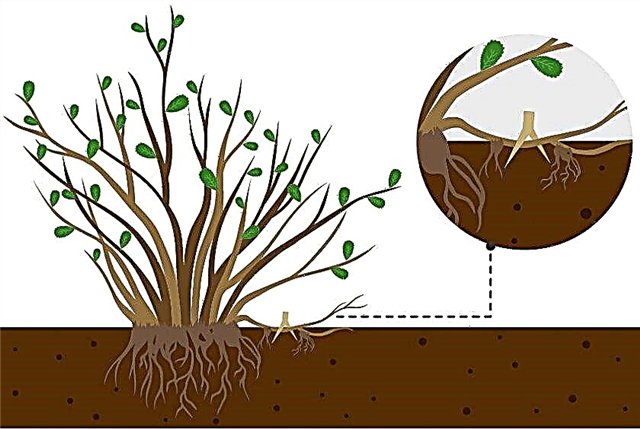
You can resort to the seed method of reproduction, but at home it will be ineffective. If the seed sprouts, then the varietal characteristics will be lost. This method is relevant for breeders.
Diseases and pests and their treatment
Bella Anna is resistant to disease and pest attacks. But still, it can be affected by diseases that can most often be caused by non-compliance with the rules of care:
- Chlorosis. The disease is caused by a lack of iron. The foliage of the plant becomes light, up to a white color and soon begins to turn yellow. The system of veins in chlorosis retains a dark color. A diseased plant slows growth, buds and foliage curl and deform, shoots dry. Fertilizing with "Antichlorosis" and other preparations that contain iron will help to cure the culture.
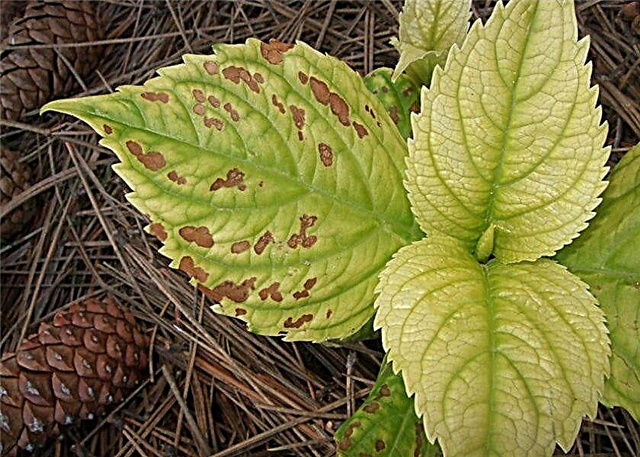
- White rot - A fungal disease that first affects the rhizome, since pathogens live in the soil. Due to damage to the roots, hydrangea does not receive nutrients and moisture, without which it soon dies. Treatment of the bush will be helped by treating the bush with fungicides: Phytosporin, Fundazol, copper chloride.
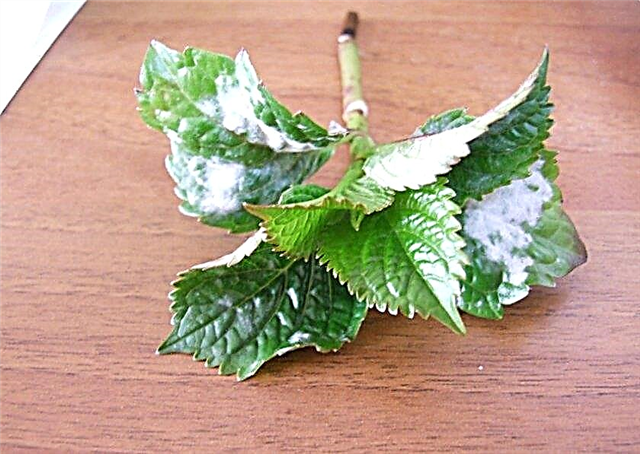
- Gray rot. Another fungal disease that signals itself with the softness and wateriness of plant tissues, as well as the appearance of a gray gun on the surface of the foliage in wet weather. When dry days come, the parts of the plant that was affected by the disease begin to turn yellow and die, after which holes appear on the leaves and shoots. Spraying the diseased shrub with a solution of "Chistotsvet", "Fundazol", "Soon" will help to overcome the disease.

- Septoria. It is reported by the appearance of dark brown spots on the foliage of Bella Anna, the diameter of which is from 2 to 6 millimeters. Lack of timely treatment can lead to loss of foliage culture and its immediate death. In order to eliminate the disease, it is necessary to treat hydrangea with copper-containing preparations: a solution of copper oxychloride or copper sulfate.
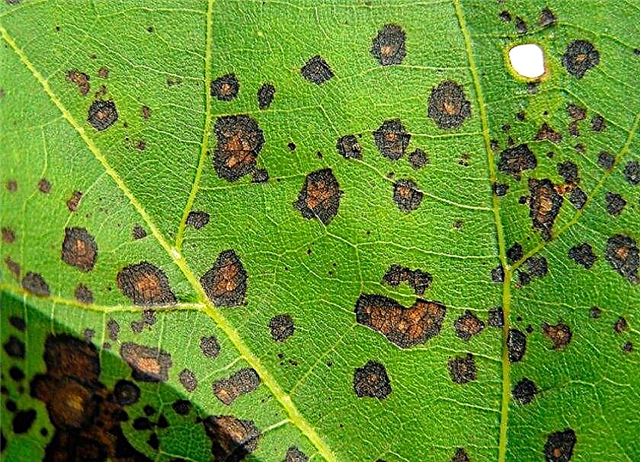
- Powdery mildew. It is manifested in the appearance of yellow-green spots on the foliage of the culture. Over the course of a week, the spots gradually acquire a brown color. The back side of the leaves is covered with a gray or purple coating. The progression of the disease is fraught with premature leaf fall and deformation of young shoots, which will die in the winter. To combat fungal infection, it is advisable to treat treelike hydrangea with solutions of fungicides: Fitosporin, Alirina, Scora, Topaz, Tiovita Jet, and Chistotsvet.
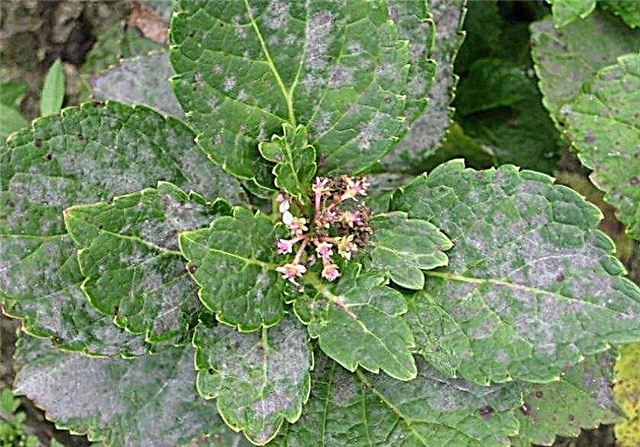
- Rust. Signals itself with a rusty coating that covers foliage, flowers and shoots of culture. The density of hydrangea planting, as well as excessive fertilizing of the culture with nitrogen-containing substances, provoke the appearance of such a disease. An effective method of control is to treat the plant with a solution of copper chloroxide (40 g of the drug per 10 liters of water). You can also resort to the help of fungicides - "Topaz", "Ordan", "Falcon".
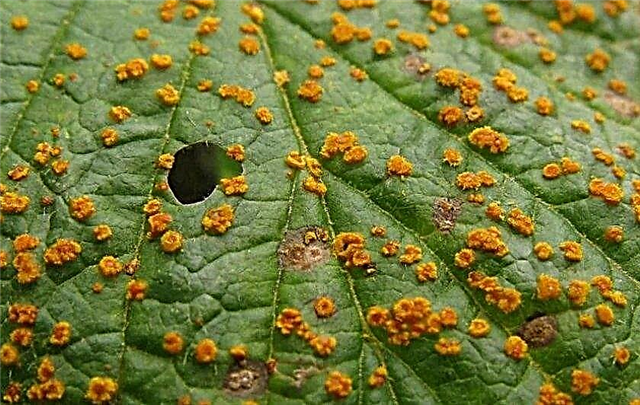
- Ring spotting. A viral disease that quite often affects the hydrangea bushes of the tree-like Bella Anna. The plant is covered with vague brown-yellow spots, the diameter of which is about 2 cm. The spots are ring-shaped. The disease leads to the death of the buds. Even if the variety can bloom, the inflorescences will be small and unattractive. Effective methods to combat ring spotting have not yet been invented, so carefully inspect the seedlings before planting, so as not to buy patients.
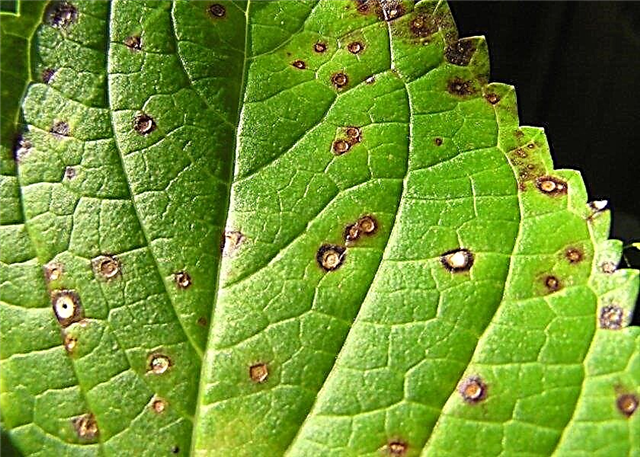 Starting to treat hydrangeas from diseases and pests with chemicals, carefully read the instructions for observing the dosage.
Starting to treat hydrangeas from diseases and pests with chemicals, carefully read the instructions for observing the dosage.
The list of pests that can attack Bell Anna hydrangea include:
- Leaf aphid. A small insect that feeds on the juice of a plant. Aphids secrete sugary foods that are consumed by an even more dangerous pest - soot fungus. The colonial life of insects on the culture leads to its depletion: foliage and shoots are deformed, the ground part begins to gradually die. In case of weak damage, it is advisable to water the bush with a strong water stream or spray it with a soap solution. If there are too many insects, then it is necessary to carry out treatment with insecticides: Fitoverm, Aktara, Iskra, Zubrom, Akarin.
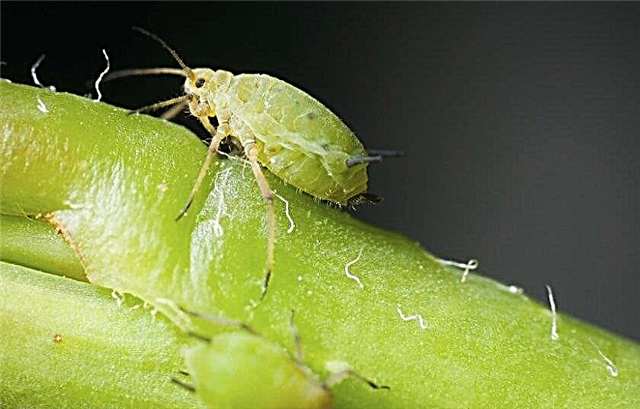
- Spider mite. Forms entire colonies on the back of the leaves, which are divided into small spots of yellow color, which eventually become marble. Over time, a thin web appears on the bush. To get rid of the pest, you need to spray hydrangea with a solution of "Fitoverma", "Lightning", "Acarina".

- Slug. Start in thickened plantings with high humidity. The harm is that they quickly eat the plant. The drug "Molluscocide" will help eliminate slugs, the granules of which are scattered under the bush.
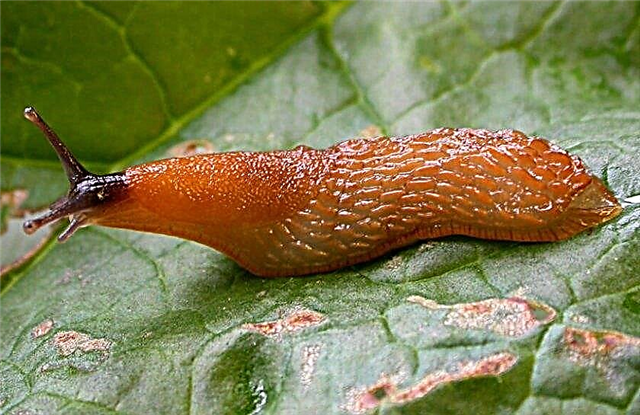
The tree-like hydrangea Bella Anna will become a bright highlight of your garden. But in order to admire its spectacular flowering, it is necessary to provide the varietal variety with proper care, strictly observing the rules of agricultural technology. And the plant will thank you with its unsurpassed decorative qualities: its large inflorescences will delight your eyes throughout the season, surprising you with the ability to change color.










 Starting to treat hydrangeas from diseases and pests with chemicals, carefully read the instructions for observing the dosage.
Starting to treat hydrangeas from diseases and pests with chemicals, carefully read the instructions for observing the dosage.


